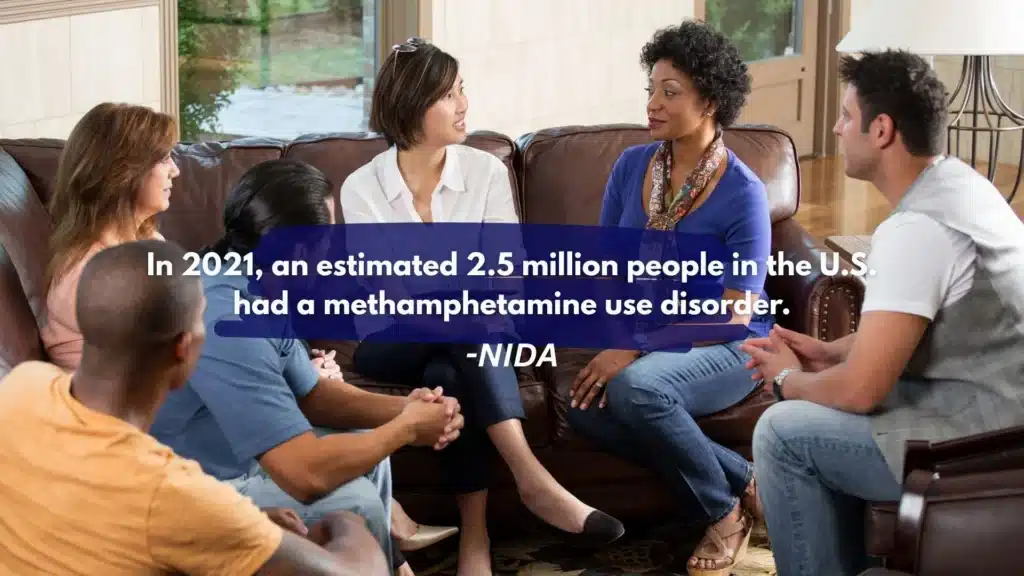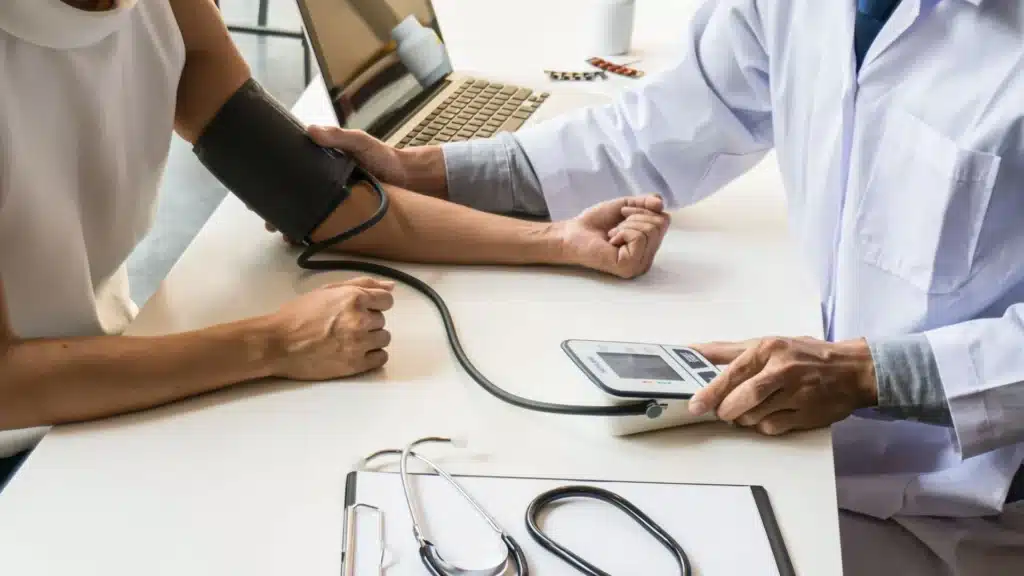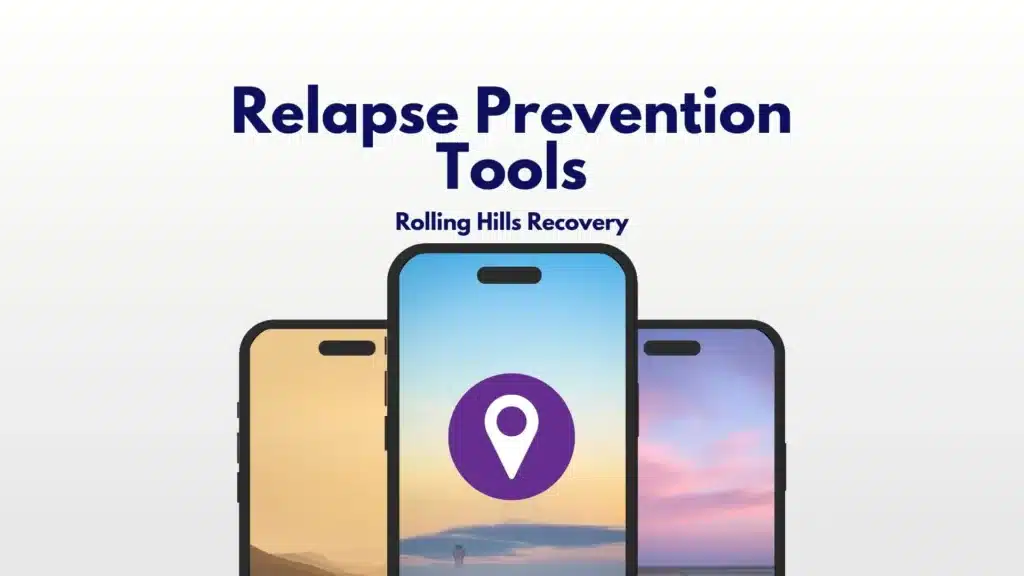Clinicians recognize methamphetamine use disorder as a complex, treatable condition. This overview explains how a meth addiction treatment center in NJ evaluates safety, manages withdrawal, and uses evidence-based therapies for stimulants like contingency management and CBT, while addressing fentanyl risks, co-occurring disorders, and family needs, helping people move from crisis to stable recovery with practical, stigma-free care.
Key Takeaways
- Contingency management is the lead treatment for methamphetamine use disorder, paired with CBT, the Matrix Model, and motivational interviewing. No FDA-approved meds yet.
- Because today’s drug supply may contain fentanyl, teams teach overdose safety, naloxone use, and sometimes provide fentanyl test strips… small steps that save lives.
- Intake includes an ASAM-guided assessment, placement into residential, PHP/IOP, or outpatient, plus family contact and insurance checks; plans stay individualized.
- Whole-person recovery matters: sleep and nutrition repair, screening and treatment for depression, anxiety, PTSD & ADHD, infectious disease testing, and steady aftercare.
Understanding a Meth Addiction Treatment Center

Methamphetamine use disorder is a chronic, relapsing condition marked by compulsive meth use despite harm. It often develops quickly and includes a cycle of binge use, crash, and escalating cravings.
Many people mix meth with alcohol, benzodiazepines, or opioids. In New Jersey, fentanyl contamination in meth and counterfeit pills adds lethal risk.
A treatment center’s role is to stabilize health, reduce relapse risk, and build a durable recovery plan.
Urgent red flags to act on now include:
- Chest pain, shortness of breath, severe anxiety or agitation, suicidal thoughts
- Paranoia, hallucinations, violent ideation, or not sleeping for days
- Signs of overdose (blue lips, slow or stopped breathing), suspected fentanyl exposure
Why specialized programs matter in NJ: state-specific patterns of drug supply and co-use require local expertise, fast access to naloxone, and policies aligned with New Jersey licensing and payer requirements.
Rolling Hills Recovery Center focuses on current stimulant trends in the region, including fentanyl cross-contamination and high-risk mixing with benzodiazepines or xylazine.
Overdose prevention belongs in stimulant care. Even though meth is a stimulant, overdoses often involve fentanyl due to contamination or co-use.
Training in naloxone use, fentanyl test strips, and rapid 911 activation is part of standard safety. A center should treat harm reduction and compassion as nonnegotiable.
Treatment works best when the care team removes judgment and stigma, and when patients feel safe enough to be honest about use.
Evidence-Based Care and Therapies
What the Science Supports Today
There are currently no FDA-approved medications for methamphetamine use disorder.
The strongest evidence supports contingency management (CM) as a first-line behavioral treatment. CM uses immediate, modest rewards (often vouchers or small gift cards) for target behaviors like negative drug screens or session attendance.
It is the most consistently effective approach identified for stimulant use disorders.

Therapies That Work Well Together
While CM is the backbone, combining methods improves outcomes:
- Cognitive behavioral therapy (CBT) to reframe drug cues, manage thoughts, and build coping routines
- The Matrix Model, a structured, time-limited program for stimulants integrating CBT, relapse prevention, education, and family involvement
- Motivational interviewing to strengthen internal motivation for change and resolve ambivalence
- Trauma-informed care to address trauma reactions driving use, using safe pacing and grounding techniques
- Skills coaching (sleep, nutrition, exercise, time-blocking) to stabilize routines fast
This mix fits stimulant recovery. Therapy for meth use is active, skills-based, and practical. Each patient gets a written plan with simple weekly goals.
Medication in the Picture (Supportive and Emerging)
Medication can treat co-occurring conditions (e.g., depression, anxiety, ADHD), help with sleep restoration, or manage mood instability. For meth use disorder itself, two research signals are worth noting:
- Bupropion plus mirtazapine has shown mixed but promising results in some subgroups, especially with co-occurring depression or for men who have sex with men at risk for HIV
- The ADAPT-2 trial in the New England Journal of Medicine found that extended-release naltrexone plus bupropion improved response rates over placebo for methamphetamine use disorder
Medication decisions are individualized. A center should explain expected benefits, limits, and side effects. Patients deserve to know that medication is not a stand-alone cure here, and that behavioral care remains central.
Medical Detox and Withdrawal Management
Meth withdrawal is usually not life-threatening, but it can be intense. Common features include profound fatigue, sleep disruption, increased appetite, depression, anxiety, and strong cravings.
Medical oversight helps with safety, hydration, nutrition, and stabilization of sleep-wake cycles.
If psychosis, severe agitation, or suicidality appear, care escalates with appropriate medications and monitoring. The aim is stability without oversedation, and a prompt transition to active therapy.
Levels of Care and What to Expect
Intake Assessment and ASAM Level Placement
A thorough intake and biopsychosocial assessment anchors the process. Clinicians use ASAM criteria to match the safest, least restrictive level of care:
- Dimension 1: Acute intoxication/withdrawal potential
- Dimension 2: Biomedical conditions
- Dimension 3: Emotional/behavioral conditions
- Dimension 4: Readiness to change
- Dimension 5: Relapse/continued use potential
- Dimension 6: Recovery environment
Patients see a licensed clinician, and often a physician or nurse practitioner. The team reviews drug use history, mental health, medical issues, housing, employment, legal needs, and supports. A preliminary plan is built on day one.
Comparing Levels of Care
| Level of care | Setting and hours | Best for | Sample length | Nights on-site |
|---|---|---|---|---|
| Inpatient/Residential | 24/7 structured environment; medical oversight | Severe use, unsafe home setting, psychosis risk, complex comorbidity | 3–6 weeks (varies) | Yes |
| Partial Hospitalization (PHP) | 5–6 hours/day, 5 days/week | Step-down from residential; stable housing; high support needs | 2–4 weeks | No |
| Intensive Outpatient (IOP) | 3–4 sessions/week, 9–12 hours total | Work/school balance; moderate support | 6–12 weeks | No |
| Outpatient (OP) | 1–2 sessions/week | Maintenance, monitoring, relapse prevention | Ongoing | No |
This framework is flexible. Movement up or down happens when risk changes.

Day-to-Day Structure and How CM Appears
A typical therapeutic day includes morning check-ins, CBT or Matrix groups, skills groups, and individual therapy.
CM is visible: patients can earn small, escalating rewards for negative urine drug screens, session attendance, completion of relapse prevention tasks, and verified 12-step or SMART Recovery participation if chosen.
The schedule is predictable, with breaks and time for meals. Each patient has a primary therapist and a physician or NP for medical follow-up.
Sleep and nutrition get attention early. Simple wins, consistent bedtime, protein in the morning, hydration, reducing cravings, and mood swings. For some, light cardio or yoga begins in week one once medically cleared.
Family Engagement, Privacy, Insurance, and Length of Stay
Family involvement can improve outcomes if the patient consents. Psychoeducation sessions teach loved ones about stimulant cravings, communication skills, and boundary setting.
Privacy remains paramount. Programs must meet HIPAA and 42 CFR Part 2 standards; patients control who can receive updates.
Insurance benefits are verified before admission when possible, with utilization review to justify ongoing care. Patients receive a clear explanation of out-of-pocket costs and what authorizations are needed.
Typical lengths of stay vary: residential 28–45 days; PHP 10–20 treatment days; IOP 6–12 weeks; OP ongoing. Individual needs drive these timelines.
Relapse Prevention and Overdose Safety Planning
Relapse prevention begins during week one. Patients map internal cues (e.g., loneliness, anger, insomnia) and external triggers (locations, dealers, certain paydays).
Plans include replacements for “fast energy” like hydration, quick protein, and structured recovery activities.
Overdose safety is central because of fentanyl risk. Programs teach overdose recognition, naloxone use, and when to call 911.
Fentanyl test strips are explained with simple instructions and limits. Patients leave with a personal, written plan and contacts.
A simple overdose safety kit should include:
- Two doses of naloxone (spray preferred), with quick-use instructions
- Fentanyl test strips and a small cup or clean cap for testing
- A rescue card listing 911, a trusted contact, and the SAMHSA Helpline
- Simple guidance on never using alone and avoiding mixing with alcohol or benzodiazepines

Integrated Health and Long-Term Recovery
Treating Co-Occurring Conditions
Co-occurring depression, anxiety, PTSD, and ADHD are common in stimulant use. Structured screening (PHQ-9, GAD-7, PTSD screens, ADHD scales) informs the plan.
Where indicated, evidence-based medications and therapies are introduced with careful monitoring to avoid energizing drugs that may worsen cravings or insomnia.
Some patients benefit from non-addictive sleep support and circadian rhythm coaching rather than sedatives.
Infectious Disease and Sexual Health
Meth can increase risk for HIV, hepatitis B and C, and other STIs. Testing and referrals (or on-site treatment) are standard.
Wound care and dental referrals are arranged when needed. Keeping medical follow-ups simple and scheduled boosts success.
Case Management, Housing, and Employment
Case managers help with IDs, insurance problems, court letters, DCP&P or probation requirements, and job-readiness.
Stable housing is a strong predictor of success; the team explores supportive housing or sober-living options if needed.
For students or employed patients, return-to-work or school planning includes a graded schedule, drug-free plans for long commutes, and a clear relapse response protocol.
Mutual-Aid and Digital Supports
Patients can sample different approaches, NA, CMA, or SMART Recovery, and pick what fits. For those who prefer privacy, telehealth therapy, online groups, and recovery apps can fill gaps between sessions.
The center’s goal is to create redundancy, with several supports available at any time of day.
Discharge Planning and Recovery Monitoring
Discharge planning starts at admission. A written aftercare plan names providers, locations, dates, and a backup plan. Urine drug testing continues in outpatient care when clinically useful.
Recovery monitoring may include brief weekly check-ins, CM vouchers for verified attendance, and a rapid re-entry pathway if relapse occurs.
Craving management is practical: eat, hydrate, take a brisk walk, delay by 15 minutes, then call a peer or counselor.
Patients learn sleep hygiene (dark room, steady schedule, cut late caffeine), and how to avoid high-risk people, places, and paydays.
Follow-up appointments are scheduled before discharge. Transportation and reminders are arranged.
Choosing a Meth Addiction Treatment Center
Licensing, Accreditation, and Credentials
Verify that the program holds New Jersey licensure and national accreditation (Joint Commission or CARF).
Ask about clinician credentials: LCSW, LPC, LCADC, psychologists, physicians, and nurse practitioners with addiction training.
Ensure there is on-site or closely affiliated medical coverage. Contingency management should be available in a structured, ethical, and trackable format.
Rolling Hills Recovery Center aligns care with the ASAM/AAAP Stimulant Use Disorder Guideline and maintains a strong harm-reduction posture. Programs should be transparent about outcomes measurement, patient satisfaction, completion rates, and readmission rates.
Questions to Ask on Day One
- How do you implement contingency management, and what behaviors are reinforced?
- What is your plan for fentanyl risk, naloxone training, and test strip education?
- How do you screen and treat depression, anxiety, PTSD, and ADHD?
- What levels of care are available if I need to step up or down quickly?
- How do you involve family without violating my privacy?
- What are typical lengths of stay, and how do you decide readiness for discharge?
- How do you handle relapse or missed sessions? What is the rapid re-engagement plan?
- Will I get a written aftercare plan with dates, names, and phone numbers?
Ethics, Harm Reduction, Outcomes, and Medications
Ethical stimulant care includes transparent CM, no coercive practices, and realistic goal-setting. Harm reduction is not “giving up”, it’s safety-first care that saves lives and improves engagement.
Centers should track and share outcomes. Medication capabilities matter: can the team manage antidepressants, ADHD medication when appropriate, sleep medications with caution, and coordinate with infectious disease or primary care?
Patients should leave with naloxone and practical overdose education.
Step-by-Step: Starting Care at Rolling Hills Recovery Center
Step 1: Confidential contact. Patients or loved ones call the admissions line. A brief screen checks safety, current use, co-occurring health issues, and urgent needs like shelter or medical evaluation.
If there are acute risks (e.g., psychosis, chest pain), a referral to emergency care comes first.
Step 2: Insurance verification. The admissions team verifies benefits, explains any co-pays or deductibles, and requests preauthorization if required.
Cash-pay options are reviewed. Patients receive a simple, written breakdown of coverage.
Step 3: Intake assessment. On arrival or via telehealth, a licensed clinician completes the ASAM-based assessment. A medical provider reviews medications, vitals, and any withdrawal symptoms.
Lab work may be drawn if indicated. Patients receive a written, plain-language treatment plan.
Step 4: Placement and schedule. Based on risk and support, the patient begins residential, PHP, IOP, or OP. A printed weekly schedule shows groups and 1:1 appointments.
Step 5: The first 24–72 hours. Priority is safety, hydration, food, and restorative sleep. Short, focused therapy starts as the patient stabilizes.
Step 6: The first week. Patients start CBT/Matrix groups, motivational interviewing, and skills training. A peer support orientation helps patients sample NA or SMART Recovery.
Case management begins with housing and work or school planning. If medications are started, follow-up is scheduled within days, not weeks.
Step 7: Weeks 2–4 and beyond. Goals expand to include trigger mapping, relapse prevention drills, and overdose safety planning. Patients practice “life” skills, pharmacy trips, meetings, and the gym before discharge.
Aftercare providers are booked, with transportation and reminders.
For those seeking the best-fit environment, Rolling Hills Recovery Center combines clinical excellence with comfort. Learn more about our approach to providing some of the best addiction treatment in NJ.
Patients who prefer a high-amenity setting can explore our article on luxury rehab centers in NJ.
If you are helping a loved one evaluate options, see how a dedicated rehabilitation center for drug addicts structures care pathways.
Practical Relapse Prevention Playbook
Cravings will happen. A written, stepwise plan improves response time:
- Name it. “I’m having a craving.” Rate intensity 1–10. Then breathe.
- Stabilize biology. Drink water, eat a quick protein snack, and move for five minutes.
- Change the channel. Text a safe contact, step outside, or drive to a meeting. Delay by 15 minutes, then reassess.
- Use the coping card. Two short CBT thoughts: “This will pass.” “If I use it, it will get worse.”
- Call backup. Contact your counselor or the on-call number. If you can’t reach someone, call the SAMHSA National Helpline.
If relapse occurs, the plan is not to punish. It’s to re-engage. Return to the next session or call admissions for a step-up in care.
Tools and Templates Patients Find Useful

- A first 72-hour stabilization plan: sleep schedule, meals, hydration targets, and three safe activities per day
- Overdose safety card: naloxone steps, 911 script, top two contacts, and a note about fentanyl test strips
- Trigger map: top five triggers, avoidance plan, and a “replace with” column for each
- A recovery calendar: sessions, testing days, CM targets, and meeting times in one view
Staff can help patients complete these documents and store them in a phone wallet or patient portal. Keep it simple.
Notes on Special Populations
Young adults may present with rapid tolerance, sleep reversal, and academic disruption. Older adults may have cardiovascular risk, dental issues, or cognitive changes requiring gentler pacing.
LGBTQ+ patients can face minority stress that worsens triggers; inclusive groups and access to HIV PrEP are important.
Individuals with ADHD need careful evaluation to balance symptom control with stimulant risk; non-stimulant options and behavioral strategies are often first-line.
Safety, Quality, and Patient Rights
Quality programs welcome feedback, post patient rights, and have grievance procedures. Urine drug testing should be used clinically, not punitively, and explained clearly.
CM must be transparent and fair, with privacy safeguards. Patient records are protected by HIPAA and 42 CFR Part 2; release of information is controlled by the patient.
Medication storage, sharps handling, and naloxone availability are standard. Fire, medical, and infection control drills are documented. Staff training includes de-escalation, trauma-informed practices, and cultural humility.
How Centers Track Progress
Progress is measured with simple tools: weekly cravings ratings, attendance, urine screens, CM points earned, mood scales (PHQ-9, GAD-7), sleep logs, and patient-defined goals like reconnecting with a parent or completing a job application.
These metrics are reviewed in 1:1 sessions. Patients can see and adjust their goals, not just be told. A trend of improving sleep and reduced cravings often predicts success.
References and Help
- NIDA Methamphetamine Research Report: current science, effects, and treatment evidence. https://nida.nih.gov/publications/research-reports/methamphetamine
- ASAM/AAAP Clinical Practice Guideline on the Management of Stimulant Use Disorder: practical guidance for CM, therapy, and medical care. (Search: ASAM AAAP Stimulant Guideline)
- NEJM ADAPT-2 Trial: Extended-Release Naltrexone plus Bupropion for Methamphetamine Use Disorder. Peer-reviewed evidence for combination pharmacotherapy in some patients.
- SAMHSA National Helpline, 24/7, confidential: https://www.samhsa.gov/find-help/national-helpline
If you or someone you love needs immediate support, call the SAMHSA Helpline now. For New Jersey-based, evidence-driven care that blends behavioral science and compassion, Rolling Hills Recovery Center can help.
Conclusion
Recovery from meth use is possible; timely, evidence-based care matters most. Key takeaways: safe withdrawal support, CM and CBT as core therapies, plus planning for fentanyl risk & co-occurring needs. Next, check insurance, schedule an assessment, and reach out today.
Frequently Asked Questions (FAQs)
What is a Meth Addiction Treatment Center?
The program focuses on safety first, then builds a personalized plan that may include medical monitoring, behavioral therapies, nutrition and sleep support, family involvement, and aftercare.
The aim is to reduce harm, restore health, and help the person return to daily life with practical relapse-prevention skills.
How Does a Meth Addiction Treatment Center Treat Methamphetamine Use Disorder?
There are no FDA-approved medications for meth use disorder, so the core is behavioral treatment.
The clinical standards often include contingency management (rewards for healthy behaviors), cognitive behavioral therapy, the Matrix Model, and motivational interviewing.
Co-occurring issues, such as anxiety, depression, PTSD, and ADHD, are treated alongside substance use because outcomes improve when both are addressed.
Due to fentanyl risks in the drug supply, the team also provides overdose education, naloxone access, and testing when clinically indicated.
Simple supports matter too: hydration, sleep repair, and nutrition, with mindfulness & stress skills built into the plan.
What Should Someone Expect in the First 72 Hours at a Meth Addiction Treatment Center?
On arrival, the person meets medical and counseling staff for an intake, vitals, labs when indicated, and a focused mental health screen.
The center manages withdrawal discomfort, monitors sleep, and supports nutrition.
Irritability and low mood are common early; that’s ok. Safety planning, cravings management, and a plain-language schedule come next.
Insurance is verified, privacy explained, and the first therapy sessions begin (often brief CBT & contingency management tasks). Family contact is coordinated with consent to keep support aligned.
How Does a Meth Addiction Treatment Center Handle Relapse Prevention and Mental Health Needs?
Clinicians build a single integrated plan. The meth addiction treatment center screens and treats co-occurring conditions, and teaches craving cues, trigger mapping, and coping skills that can be used in real life.
Patients practice urge surfing, brief breathing drills, and sleep routines. Medication may be used for specific symptoms (for example, depression or insomnia) based on individual evaluation.
Discharge planning starts early, with continuing care, recovery check-ins, and a simple safety plan that includes naloxone where appropriate.
Author
-
Our editorial team includes licensed clinicians and board-certified addiction specialists. Every article is written and reviewed to be clear, accurate, and rooted in real treatment experience.
View all posts -
Dr. Williams has held senior leadership positions in the behavioral health field for over 30 years. He has worked with diverse populations in various private and public sectors.
View all posts












